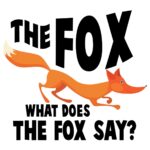The Art of Drawing Hair: A Comprehensive Guide
Hair is one of the most challenging and intricate elements to capture in drawings and illustrations. From the delicate strands to the complex textures and volumes, mastering the art of drawing hair can elevate your artistic skills and bring your creations to life. In this comprehensive guide, we’ll explore the techniques, principles, and best practices for drawing hair, equipping you with the knowledge and tools to tackle this captivating subject.
Understanding the Anatomy of Hair
Before delving into the drawing process, it’s essential to understand the basic anatomy and structure of hair. Hair is composed of three main parts: the cuticle, the cortex, and the medulla.
- Cuticle: The outermost layer of the hair, the cuticle is made up of overlapping scales that protect the inner layers of the hair.
- Cortex: The middle layer of the hair, the cortex is responsible for the hair’s strength, texture, and color.
- Medulla: The innermost layer of the hair, the medulla is a hollow, spongy structure that can affect the hair’s appearance and texture.
Recognizing these fundamental components will help you better understand the nuances of hair structure and how to translate them into your drawings.
Observing Hair Characteristics
Effective hair drawing begins with keen observation. Take the time to study the hair of your subject, whether it’s a person, animal, or fictional character. Pay attention to the following characteristics:
- Texture: Hair can range from straight and smooth to coarse and curly. Observe the individual strands and how they interact with each other.
- Volume: Hair can have varying degrees of volume, from thin and wispy to thick and voluminous.
- Lighting and Shadows: Notice how light and shadows play across the hair, creating highlights, lowlights, and reflections.
- Movement and Flow: Observe how the hair moves and flows, whether it’s static or in motion.
- Color and Tone: Analyze the range of colors and tones present in the hair, from roots to ends.
By closely observing these elements, you’ll develop a deeper understanding of the complexities of hair, which will translate into more realistic and expressive drawings.
Techniques for Drawing Hair
Now that you’ve familiarized yourself with the anatomy and characteristics of hair, let’s explore the various techniques for drawing it effectively.
1. Sketching the Basic Form
Begin by sketching the overall shape and volume of the hair. This can be done using simple shapes, such as ovals or rectangles, to establish the basic structure. Pay attention to the direction and flow of the hair, as well as the placement of the hairline and parting.
2. Rendering Individual Strands
Once you have the basic form established, start adding individual strands of hair. Use a variety of line weights and textures to create the illusion of depth and dimension. Remember to consider the direction and movement of the hair, as well as the lighting and shadows.
3. Incorporating Texture and Volume
To capture the realistic texture and volume of hair, experiment with different drawing techniques, such as hatching, cross-hatching, and stippling. Use these techniques to suggest the individual strands and the overall flow of the hair.
4. Highlighting and Shading
Pay close attention to the way light and shadows interact with the hair. Use highlights to create the illusion of shiny, reflective surfaces, and use shading to suggest depth and form.
5. Refining and Detailing
As you progress, continue to refine your drawing by adding more intricate details and nuances. This may include addressing flyaways, split ends, and the subtle variations in color and tone throughout the hair.
6. Experimenting with Media
Explore different drawing media, such as pencils, pens, markers, and even digital tools, to find the techniques and materials that work best for you. Each medium can offer unique advantages and challenges when it comes to rendering hair.
Hairstyles and Variations
Hair can take on a wide range of styles and variations, from straight and sleek to curly and voluminous. Familiarize yourself with different hairstyles, such as:
- Straight hair
- Wavy hair
- Curly hair
- Braids and plaits
- Updos and buns
- Short hair
- Long hair
Understanding the unique characteristics and challenges of each hairstyle will help you adapt your drawing techniques accordingly.
Incorporating Hair into Larger Compositions
When drawing hair as part of a larger composition, such as a portrait or a full-body illustration, consider the following:
- Proportions: Ensure that the size and scale of the hair are in harmony with the rest of the subject.
- Placement: Pay attention to the placement of the hair within the overall composition, as it can significantly impact the overall balance and visual flow.
- Interaction with Other Elements: Consider how the hair interacts with other elements in the composition, such as clothing, accessories, or the background.
By integrating hair seamlessly into your larger drawings, you can create a cohesive and visually compelling final product.
Frequently Asked Questions (FAQ)
- What are the basic steps for drawing hair?
- The basic steps for drawing hair include: 1) sketching the basic form, 2) rendering individual strands, 3) incorporating texture and volume, 4) highlighting and shading, and 5) refining and detailing.
- How do I capture the different textures of hair?
- To capture different hair textures, experiment with various drawing techniques, such as hatching, cross-hatching, and stippling. Observe the characteristics of the hair and use these techniques to suggest the individual strands and overall flow.
- What are some common hairstyles I should practice drawing?
- Some common hairstyles to practice drawing include straight hair, wavy hair, curly hair, braids and plaits, updos and buns, short hair, and long hair.
- How do I incorporate hair into a larger composition?
- When incorporating hair into a larger composition, consider the proportions, placement, and interaction of the hair with other elements in the drawing. Ensure that the hair is in harmony with the overall composition.
- What drawing media work best for rendering hair?
- Various drawing media can be used to render hair, including pencils, pens, markers, and digital tools. Experiment with different materials to find the ones that work best for your style and preferences.
- How do I create the illusion of depth and volume in hair?
- To create the illusion of depth and volume in hair, pay close attention to the way light and shadows interact with the hair. Use highlights to suggest shiny, reflective surfaces, and use shading to suggest depth and form.
- What are some common challenges in drawing hair, and how can I overcome them?
- Common challenges in drawing hair include capturing the intricate details, rendering the various textures and volumes, and integrating the hair seamlessly into the overall composition. Consistent practice, close observation, and experimentation with different techniques can help you overcome these challenges.
- How can I improve my ability to draw hair realistically?
- To improve your ability to draw hair realistically, focus on developing your observational skills, practicing different drawing techniques, and continuously refining your work. Studying reference images and seeking feedback from others can also help you identify areas for improvement.
- Is there a specific order I should follow when drawing hair?
- There is no single, prescribed order for drawing hair, as the process can vary depending on your personal style and the specific requirements of the drawing. However, the general steps outlined in this guide – sketching the basic form, rendering individual strands, incorporating texture and volume, highlighting and shading, and refining the details – can serve as a helpful framework.
- How can I make my hair drawings more expressive and dynamic?
- To make your hair drawings more expressive and dynamic, pay attention to the movement and flow of the hair, as well as the emotional or narrative context of the drawing. Experiment with different line qualities, use of negative space, and the overall composition to convey a sense of energy and personality.
Comparison of Drawing Techniques for Hair
| Technique | Description | Suitable for |
|---|---|---|
| Hatching | Parallel lines used to suggest form and texture | Straight, smooth hair |
| Cross-hatching | Intersecting sets of parallel lines | Wavy, curly hair |
| Stippling | Dots or small marks used to build up tone and texture | Coarse, textured hair |
| Scribbling | Loose, expressive lines to capture movement and energy | Dynamic, flowing hair |
| Blending | Smoothing and softening of lines to create a cohesive, seamless appearance | Soft, wispy hair |
Source: Wikipedia – Drawing Techniques
Conclusion
Drawing hair is a complex and rewarding challenge that requires a deep understanding of its anatomy, characteristics, and techniques. By mastering the art of rendering hair, you can elevate your artistic skills and create captivating, lifelike drawings. Remember to approach this subject with patience, practice, and a keen eye for observation. With the guidance provided in this comprehensive guide, you’ll be well on your way to mastering the art of drawing hair.



